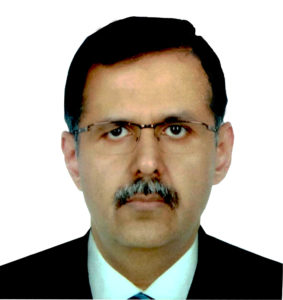
Swapneel Nagarkar, senior vice president and business head, Godrej Security Solutions
Gold has always been and still continues to be the most valued commodity/investment-whether it is in the form of jewelry, coins and other assets. Though gold is a highly liquid asset, it is only recently that consumers have learnt to leverage it effectively to meet their liquidity needs. Many banks today are seen to be providing loans against gold as security collaterals from customers.
There has been an increase of gold loan transactions since the onset of demonetization and owing to the high sentimental value attached to gold, banks which are now the custodians of pledged gold, has a huge responsibility to keep the gold secure. Lately there has also been a lot of demand for safe storage of gold.
But how effective is the security infrastructure at banks today… are bank lockers safe? This has become a difficult question to answer. The recent robbery at Bank of Baroda branch in Navi Mumbai where robbers escaped with valuables and jewelry worth over Rs 1 crore from 30 safety lockers, by digging a 25-feet tunnel from the adjacent shop, has again raised an alarm in the mind of consumers about the safety of their valuables and the level of security infrastructure of banks. Experts and bankers are now seen to be suggesting upgradation of security and alarm systems, issuing revised guidelines and safety procedures to tackle the intelligent techniques of robbers and criminals.
In 2014, robbers dug up a 125-foot-long tunnel into a Punjab National Bank branch in Sonepat district in Haryana breaking into 77 lockers decamping with cash, jewelry and other valuables. In June this year, a PNB branch was attacked by burglars who drilled a two-foot hole stealing valuables out of 30 lockers. These incidences could have been prevented, if the banks had taken charge of regular audits of security infrastructure put in place.
An increasingly large number of Indian consumers are taking loans from banks, providing their gold ornaments as security. Consequently, there is a growing need to boost the security infrastructure of banks.
In the overall security system of bank premises, the safes that house the lockers (storing gold) serves as the last line of defence. If the criminals can overcome the initial lines of defence e.g. surveillance systems and alarms before entering the strong rooms, breaking lockers is not too difficult for them, and traditionally, that has been the easiest thing for them to attack. Thus, it becomes imperative that the last line of defence is extremely strong and robust, so that even if a burglar is able to penetrate the initial levels of the bank’s security, it becomes difficult to tackle the last line of security.
The current levels of skillsets of the burglars are extremely advanced as evidenced by the recent crime occurrences. Banks need to take strong measures to counter these robbers who have advanced modus operandi. The strong room where the gold is kept must be fortified.
Unfortunately, this is not possible in many of the old branches, which were built in the 1980s or 1990s. Some of these banks assumed that having security cupboards inside the strong room was adequate enough to prevent robberies – unfortunately that is not enough.
According to estimates, about 30 per cent of the total number of 150,000 bank branches in India became operational before 1990. And most of these branches have a high footfall of customers on account of the community built-up that has happened over the years. Unfortunately, most of the attacks on banks happen in these very branches, as the attackers strategically choose these locations where the security has loopholes and the infrastructure needs to be beefed up by quite a few notches.
Enhancing security
Installing surveillance and alarm systems to enhance the security in strong room doors is the bare minimum which definitely needs to be there in place. In order to ramp up the security, it is recommended to go for advanced solutions – having intelligent safes with built-in sensors that would trigger off alarms in case of unwanted attempts to access the safe and this is especially important when banks are closed at night or on holidays. Banks need to move towards smart security products which have been designed, developed and equipped with in-built intelligence – so that in addition to triggering off an alarm they also alert the concerned security personnel and police.
One also should look at the room where the locker is placed and fortify it as well. The rooms should be well built and have 12-inch-thick walls. If the doors are not good, they are the weakest links in the security chain. Even if the door is strong, the ceiling or the floor might be weak, and that might compromise the entire set-up. Possibility of customizable solutions can be worked upon where each of the lockers (within safes) are equipped with sensors and it alerts the owner in addition to bank personnel in case of an attack.
If a bank branch already has strong room, fortification can be provided to all the walls and customizable strong room doors should be there in place e.g. putting slabs on the outer side of the door to strengthen it. The right solution, has to be adopted, as desired by the banks according to the threat perception of that bank.
An unfortunate aspect of banks in tier-II and tier-III cities is the fact that they do not pay adequate heed to proper annual maintenance and opt for AMCs. Even basic level of security isn’t found in these branches. This result in the failure of their security systems and alerts, especially in case of an attempt of burglary.
In many cases the police have observed that the alarm systems were not working, encouraging the robbers to invade the security. These banks need to set up periodic audits, to ascertain the security levels and need of security upgradation of these bank branches.
Operation Vajra
Recently, we started a unique initiative, called Operation Vajra, where free audits are done for bank security structures like strong rooms that have been operational since before 1990s when threat perceptions were not very high. This is a part of the overall ‘Secure Bank’ initiative which this organization is spearheading to raise the level of security in the BFSI space.
After doing a structural analysis in terms of how strong (or weak) the wall or the ceiling is, and whether these can be strengthened, report is submitted to the banks. Many of the banks have taken a positive approach towards Operation Vajra and have asked to do such audits and let them know the deficiencies in terms of security.
Of late, many of the banks have also started looking at security in a holistic manner focussing not just on one aspect but taking care of the end-to-end solutions.
Safe to safer
Banks in India have now become much more proactive in terms of deciding the security set-up. Even the Reserve Bank of India (RBI) had set up a working committee that came out with guidelines a few years ago, urging banks to strengthen their safes and upgrade strong room doors. The recent report of Indian Banks’ Association (IBA) emphasizes the need of upgrading the current security infrastructure at the bank premises and adopting the most technologically advanced solutions.
Many banks feel that their old safe seem sturdy, but the fact is that even an instrument like a oxy-acetylene torch or a jackhammer can destroy it. It is important to understand the specific requirement – whether to go only for a Tool resistant safe or a Torch & Tool resistant safe which uses advanced technology to secure and defend itself against the most intense forms of modern day attacks.
It is important that banks keep pace with the changing times and there’s a dire need to adopt a comprehensive security solution that protects against modern day security threats – the occurrences of which have increasingly become rampant during the recent times.
- Swapneel Nagarkar is senior vice president and business head, Godrej Security Solutions







